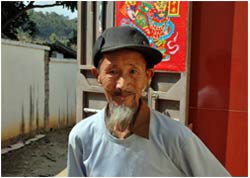 |
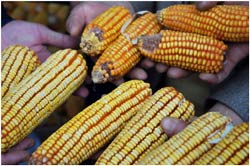 |
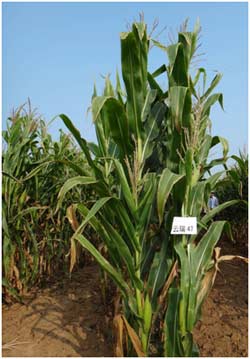 |
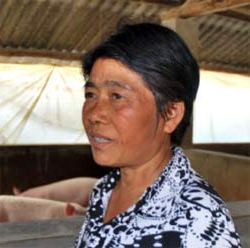 |
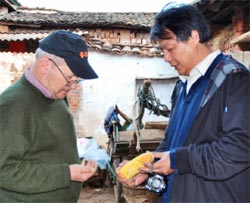 |
Farmers in Yunnan Province are increasingly reacting to climate change by using maize seed for drought conditions developed by CIMMYT in collaboration with the Yunnan Academy of Agricultural Sciences.
Forming part of southwest China’s rugged terrain, the Yunnan Province mountain chains create spectacular vistas in every direction. Unfortunately, the scenic landscapes also make life tough for farmers. Only 5% of the province is cultivated land. Still, agriculture is a pillar of the provincial economy, and maize is the most commonly grown crop.
Faced with a mean elevation of over 2,000 meters and average slopes as steep as 19 degrees, Yunnan farmers have adapted by growing maize on the hills and mountains. This so-called “down-slope cultivation” has fed Yunnan for generations, but it has drawbacks, like increased erosion. Yunnan is one of the areas in China most seriously affected by erosion.
Missing the monsoon?
Besides their tremendous ability to adapt, farmers have one other ally in the continual struggle to grow maize in this unlikely environment: the monsoon. Yunnan Province has a subtropical climate and an average annual rainfall of more than a meter—very generous for maize—and most of which normally falls during the growing season, May to October.
But today’s farmers in Yunnan have a new concern: what happens when the monsoon fails to appear? It’s not a hypothetical question. In 2010, severe weather in southwest China resulted in the region’s worst drought in a century. In the months prior, large swaths of Yunnan hadn’t received adequate rainfall. Then the rainy season ended early, temperatures rose, and drought set in, ultimately affecting more than 60 million people and destroying billions of dollars worth of crops. In 2011, drought re-occurred in eastern Yunnan, affecting a large area of maize.
Now farmers are left wondering if these phenomena are flukes or part of a larger trend. In fact, climate change models suggest the fluctuations in rainfall will continue and increase in intensity. Yunnan’s maize farmers may no longer be able to count on the monsoon.
Better maize: Part of the answer
The solution, put simply, is to change. And helping farmers to change from the only thing they’ve ever known takes patient expertise. Some of that has come from a team led by Dr. Fan Xingming, Director General, Institute of Food Crops, Yunnan Academy of Agricultural Sciences (YAAS), in partnership with CIMMYT.
Drawing on sources from CIMMYT’s maize and wheat seed bank—which conserves 27,000 unique collections of maize seed—Fan and his group have developed 22 hybrids, several of which possess improved performance under drought and multiple disease resistance. Because they produce consistently higher yields and better incomes for Yunnan farmers, the hybrids have been a hit. Today they cover approximately 200,000 hectares—15% of Yunnan’s annual maize area—and have increased farmers’ incomes by approximately USD 200 million between 2000 to 2010. One of those developed, Yunrui 47, is drought tolerant and performed well in 2011 in severely droughted areas in Yunnan, including Zhaotong, Wenshan, Xuanwei, and Huize.
Some are more resistant to insect infestation and rot than older maize varieties. Because of this, their grain can be stored longer. Instead of selling their harvest in January when prices are low, farmers can keep it until June, when prices are better. The hybrid Yunrui 88 is high-yielding and resistant to several of the region’s most damaging maize diseases, according to Dan Jeffers, a CIMMYT maize breeder based in Kunming. “Yunrui 88 has been highly resistant to maize dwarf mosaic, resistant to leaf blights, and shows intermediate resistance to ear rot,” he says. “In addition, it yields an average of around 9 tons per hectare of grain.”
Another of the hybrids, Yunrui 8, is an example of quality protein maize, a high-lysine and high-oil hybrid that is more nutritious for humans and farm animals, as well as being highly resistant to ear rots. Yunrui 8 has been recommended by the Ministry of Agriculture of China as the leading national variety in 2010. It is the most popular hybrid in Yunnan, with a cumulative coverage of 0.5 million hectares in the province.
Farmers have testified to the nutritional quality of the hybrid grain. Huan Yuanmin and her husband grew Yunrui 8 on 4.6 hectares for 3 years. Utilizing the profits from their surplus harvests, they bought 200 pigs and fed them hybrid maize grain. “We noticed that with the hybrid maize, our animals grew faster and were more robust,” says Huan. “The sows gave more milk, so suckling pigs could be weaned three-to-five days ahead of the normal of 28 days.” This in turn raised the family’s profits. “Even the skin and hair of the pigs became shinier,” she added.
International partnerships bring benefits for farmers
Staff of YAAS began collaborating with CIMMYT in 1976. Over the decades, that relationship was strengthened by the personal visits of CIMMYT regional maize staff and the late Nobel Peace Prize Laureate and wheat breeder, Dr. Norman Borlaug. According to Fan, CIMMYT germplasm was the basis for Yunnan’s strong maize production and breeding program. “CIMMYT experts have helped Yunnan in many ways, including training and sharing expertise,” he said. “I really appreciate this and sincerely hope we can continue cooperating, progressing in maize breeding, and developing more hybrids that will allow farmers to contribute to the food security of people in less developed areas.”
For more information: Dan Jeffers, maize breeder (d.jeffers@cgiar.org)
Related story:
- HarvestPlus-China field day exhibits maize hybrids in southwestern China